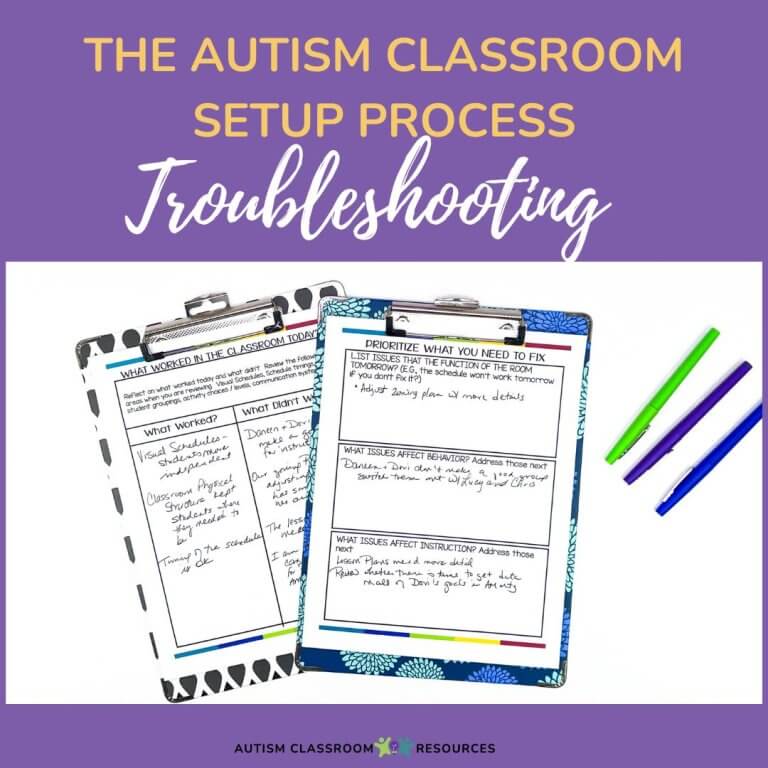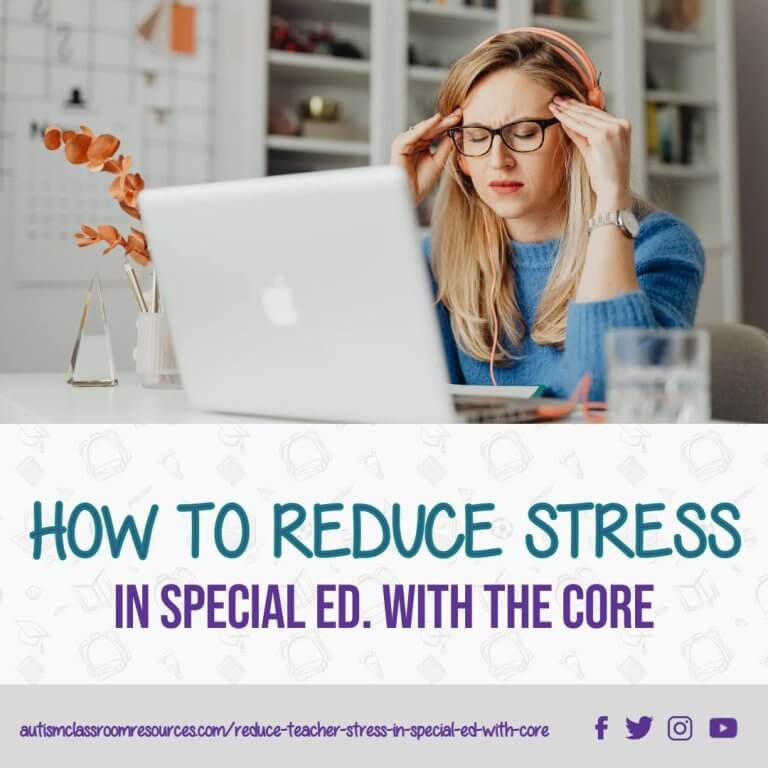Often on Facebook or in the community of the Special Educator Academy, I get asked for ideas about planning lessons for teaching observation for situations like job interview demonstrations, principal evaluations, visiting administrators to the classroom etc. And really, these questions don’t ask specifically about best practices for lesson planning. They are usually put more like this:

Unfortunately, like most things, the question isn’t simply answered as it is in a great way. For instance, it always depends on the students of the observed teacher–their needs and characteristics. It depends on the amount of time you have for the observation process, how well they work independently, the purpose of the observation, etc. Because, as we all know, special education is certainly not one-size-fits-all. And it certainly isn’t simple.
But there are some basic questions to ask and guidelines that can help you create a killer demonstration lesson for your next formal teaching observation. Oh, and they also apply to just regular lesson planning.
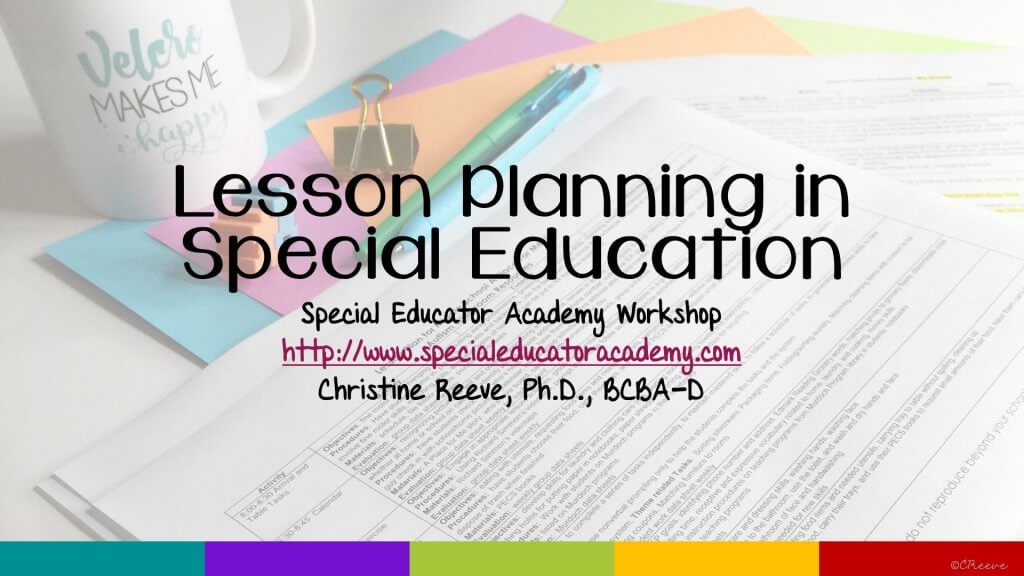
1. What Skills Do the Students Need to Target?
If you’ve followed me for any length of time, it won’t surprise you to hear me say this is the first question. First, you have to base everything you do in the classroom on the students themselves. Student learning in a resource classroom is going to look different than one in a self-contained classroom. Similarly, while good general education lessons should differentiate and incorporate a lot of the same strategies, your lessons aren’t going to look like theirs either. If they did, your students would be in that room and not with you in your class session.
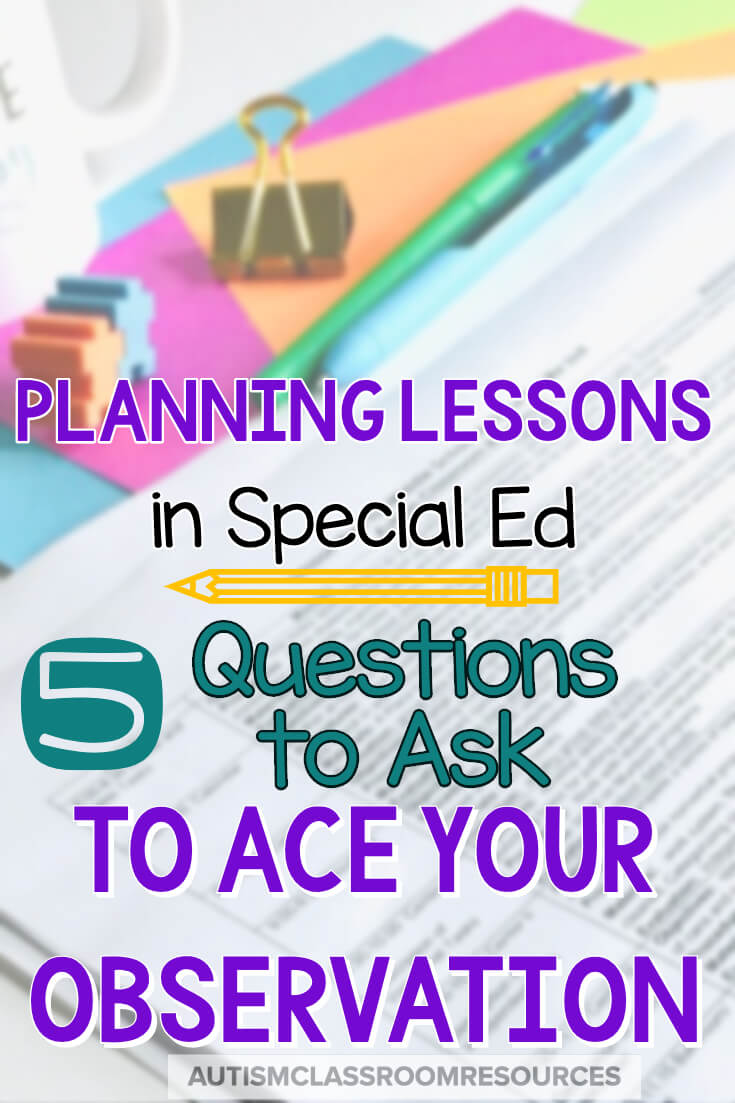
So, if you are planning lessons for your current classroom, what skills does each of the students need to address in that area. If you are planning a lesson for a job interview or teaching observation where you aren’t as familiar with the students, ask that question. In that case you won’t need to know every skill the students need for student success, but you do need to know overall what their skills are.
The key to good lesson planning for your teaching observation is making sure that your lesson addresses the individual needs of the students. It’s great to do an amazing engaging lesson. But if it doesn’t meet the needs of what the students need to learn, it won’t help them much in their overall student achievement. And it also won’t show your effective teaching observation strategies.
Obviously you won’t be targeting all of their needs. But you can choose from those needs to demonstrate / integrate a selection of skills for the group and/or individual students during teacher observations.
2. What Skills Do The Students Have?
So while #1 addresses the skills the students need to learn, this question asks what the students are able to do and what their areas of strength are. This is critical for making sure you plan a lesson that keeps the students meaningfully engaged. It helps in knowing the right length and the amount of individualization that will be needed.
Skills you want to know about for planning lessons
- How independent are the students? Is there enough time for them to work on their own?
- How long are students able to remain in a group? Do they have difficulty staying engaged?
- What are the students’ best communication strategies?
- Do they know how to share materials (or is this a skill to target)?
- Can they do a good job of working cooperatively?
- Bonus question: Do the students have any special interests?
Answers to these questions let you know whether you should
- Break them up into smaller groups.
- Assure you have manipulatives for them to hold and use
- Include materials for each individual student
- Pre-program communication devices or provide visual supports (or both)
- Plan multiple brief activities rather than a longer group
- Have some students work cooperatively or independently while you provide more explicit instruction to other students
3. What Medium Matches The Skills Needed and Present Levels?
Now that you know and have considered information about the students themselves, next up is thinking about what type of materials and lesson activities will fit the answers to #1 and #2.
- Are these students who will be able to manage a whole class group activity?
- Will they likely do better with a lesson that explains a concept to the whole group and then breaks down to have them work?
- Or would they do better with more individual or accommodated activities for each student with reviews of the topic to smaller subgroups?
- Are these students who can complete a written activity or do you need to have more hands-on materials like file folders and cut and paste?
- Will they do better with visual supports–if so will group supports work or will you be better off with individual supports?
With all of these questions and information, keep in mind that you will be better off planning for activities that engaging and provide MORE support than you think they might need. You can always remove supports when you see they aren’t needed. But if you need a visual, like a first-then schedule, and don’t have it available, it’s harder to get past that. Always keep those visuals in your “back pocket” so you have them when you need them.
4. What Strategy Will Be Best Suited to Keeping Students Engaged?
Your biggest challenge, often, in a special education lesson (especially if you are interviewing and don’t know the students) will be keeping the students engaged. And chances are good that even if the lesson doesn’t go perfectly if you keep the students meaningfully engaged, it will be successful.
So, what strategies can you use to help the students stay engaged?
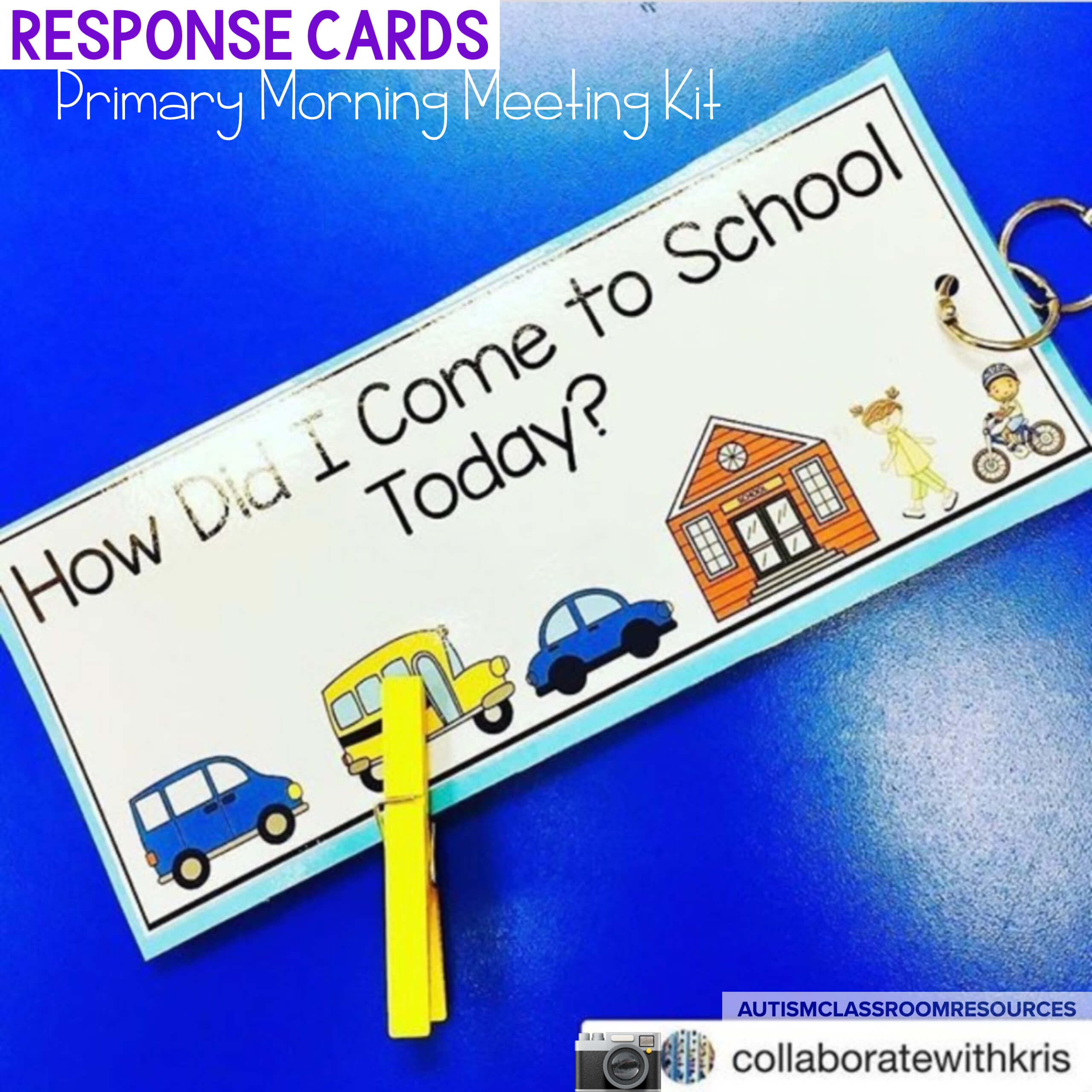
- It is good practice to use manipulatives that are related to the activity to help them follow along. You’ll find some examples in this post about engagement for younger students and age-appropriate engagement for older students.
- Use response cards so that all the students respond to each question.
- Reinforce on-task behavior autism classroom to see it increase.
- If you are reading a story, give all or specific students their own smaller copy of the book to follow along.
- Add in call-and-response to have the whole group answer questions as you go through the lesson.
- Keep the pace brisk so it goes by quickly while still giving the appropriate time for individual students to process information as needed.
- Assure you have communication devices and visuals set up ahead of time to support the activity.
- Have all your materials set up and ready to go before the students get there. Consider having some extra activities in your “back pocket’ to pull out if you get done more quickly than expected or need to fill in if there is a problem.
5. How Will You Measure and Document Performance for your Teaching Observation?
Ah yes, data collection! Don’t panic! It doesn’t have to kill your lesson. But you do need to think about how you will measure the students’ performance on skills.
If you are doing an activity with a project or written component, you might be able to use work products or work samples. Grab the work product data collection labels from the Free Resource Library and impress your principal by spending time to have complete information right on the sample itself.
Or set up a looking for lesson plan templates that can help with that….this post has them.to track individual skills that you have built into the group instruction. Have more than 5 students? Grab the editable version of the naturalistic data sheet in my instructional data megapack from TpT. In that set you’ll find lots of ideas for different types of data collection, and more forms of the work product stickers as well.
And finally, to make your activity a true success, you want to make sure you write it down. One of the reasons why I think lesson plans are important is specifically because you have to communicate the other staff who support your lessons for teaching observation. If you are looking for lesson plan templates that can help with that….this post has them.
Hopefully those questions will help develop a killer lesson to demonstrate instruction for a principal, visiting administrator or outside consultant.



